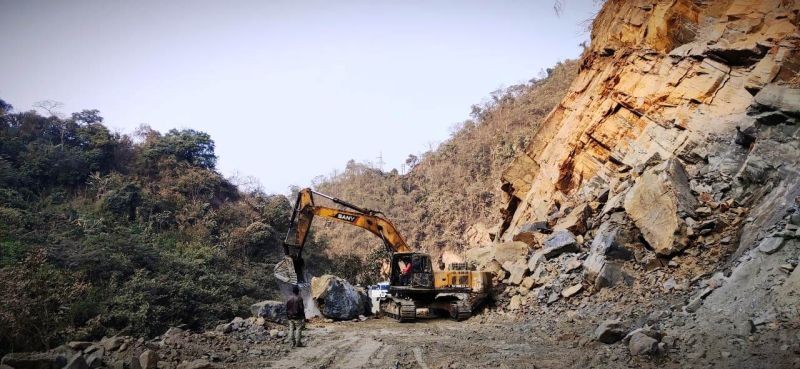
Prof G T Thong
The editorial of The Morung Express, “At what cost?” dated 9 February 2021 reminded us of the 2nd-February-disaster in the Paglapahar area of the National Highway 29. Portions of this section of the highway are very vulnerable to rock avalanches. The recent episode destroyed some vehicles, but the people in them escaped, providentially.
The looming danger was clearly visible in the form of gigantic cracks in the overhanging rocks above this busy highway for many weeks preceding the disaster, but precious little was done to avert possible disasters. This section is usually blocked during the weekends for expansion works; the public hardly complained because most understood the necessity. However, the days the road was open for vehicular traffic were tension-filled for the commuters.
The extensive damage of the rocks is due to lack of technological know-how in the use of dynamite. Dynamite is a good choice in certain terrain, perhaps even in the present area. It also appears that the site engineers and geologists (if any?) have limited knowledge of rock mechanics and geotechnical engineering. This area between New Chümoukedima and the Chümoukedima Police Check Post is not called Paglapahar without reason. The rocks are very weak compared to those of the Piphima-Pherima areas. The precarious situation is compounded with the steep slopes and high relief, which makes the terrain naturally prone to rockfalls and debris slides.
It is important that this portion of the highway too is widened to help speed up development,but the approach to the problem is poor, seemingly devoid of technical expertise. Mining Engineers work in more difficult areas, which for the most part, is in the subsurface where rocks of varied nature are encountered. To ensure safety, and stability of the environment they resort to controlled blasting, which requires thorough knowledge of rock mechanics, which Civil Engineers and Engineering Geologists are familiar with. Controlled blasting, with good knowledge of rock properties, ensures that the effect of blasting using dynamite is restricted to the immediate area of interest. Thus, shock waves die away after a certain distance. This ensures that the rocks beyond the area of interest are not shattered.
Another problem noted is that the products of these avalanches and rock/debris slides and abundant excavated material are dumped into the Chathe River below. The river in this area is highly meandering, with the potential for aggressive erosion of its banks. With the dumping of so much of rocks and soils into the channel, the danger of damming is real. A major avalanche in the narrower sections can block the river channel completely. Heavy rainfall or seasonal storms can destroy such barriers, allowing the trapped waters to gush down and devastate the foothills and portions of the highway itself, which will induce more landslides. Such channel floods may wash away everything in their paths, as had happened in Chamoli (Uttarakhand) recently.
Therefore, it is advisable to get the help of Engineers proficient with controlled blasting and geologists of the Geological Survey of India or Directorate of Geology & Mining at Dimapur.





